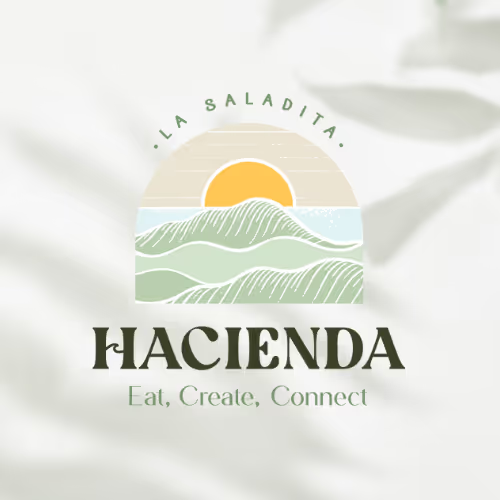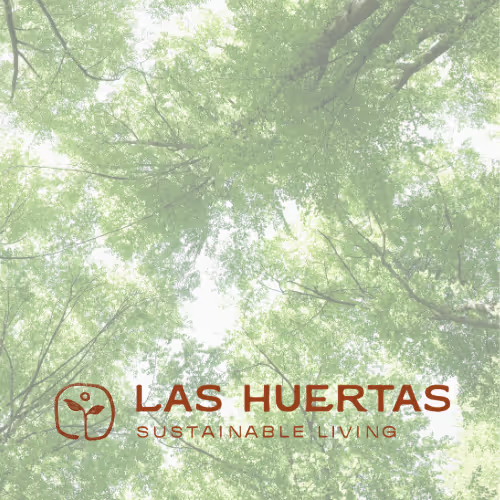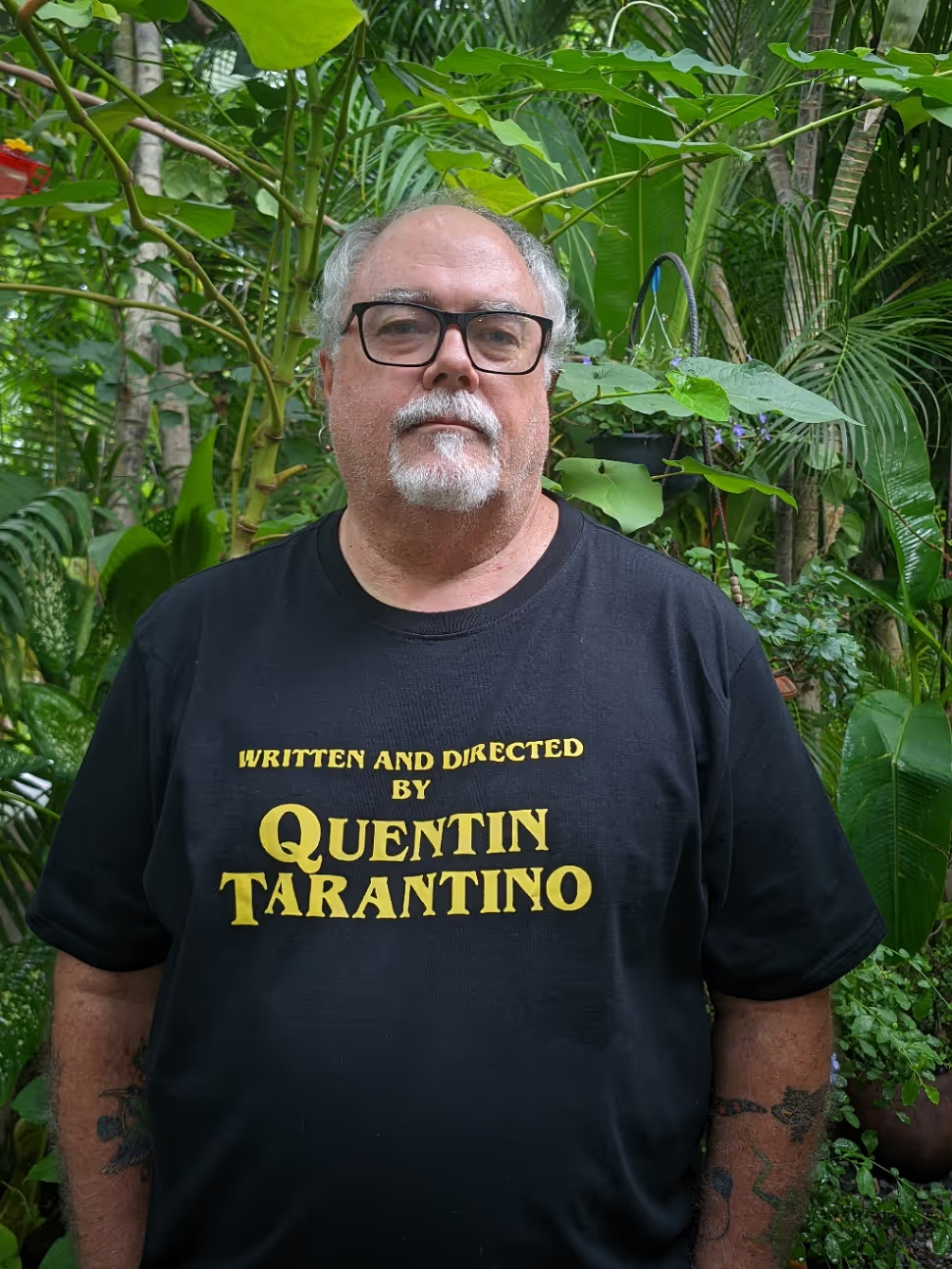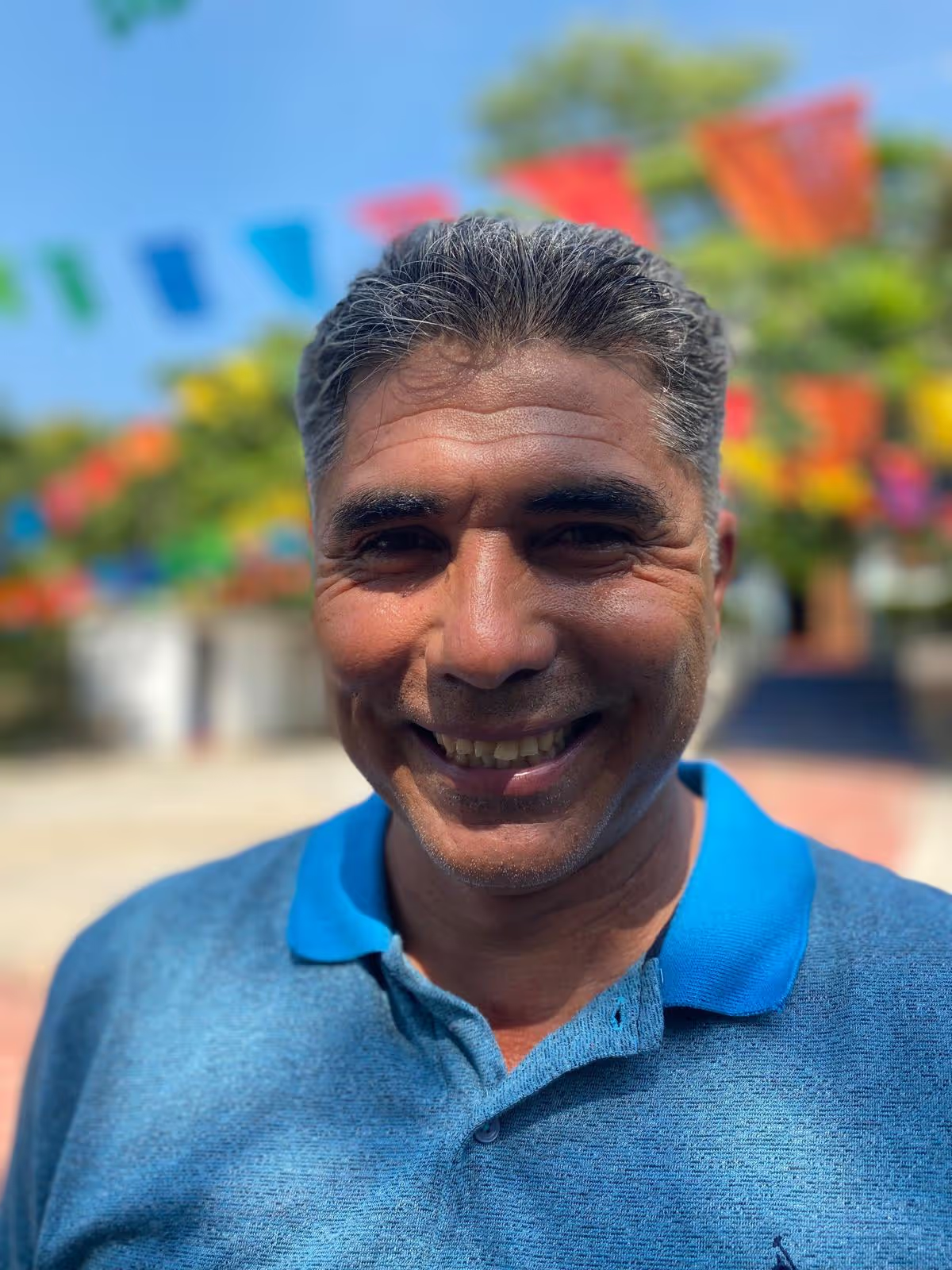Enedino Sánchez: Master Gardener, Quiet Hero, the spirit of troncones
Anytime you admire a garden in Troncones, chances are it’s been touched by the hands of Enedino Sanchez. Anytime you go to a fundraiser in Troncones for someone in need, chances are he’s one of the organizers.
As the owner of a picturesque vine-covered laundromat set in the middle of an always-in-bloom nursery, Enedino Sanchez is well-known in Troncones, Truth is, he’s counted on for more than clean clothes and big bougainvillea. A member of the church, an advocate for public transportation, education and water management, and a caregiver to his family and neighbors, Enedino embodies the spirit of service that’s needed for a small town to thrive. His commitment and dedication have helped shape and sustain the character of Troncones.

LVT: Where were you born?
ES: I was born in Infiernillo, in Guerrero. It doesn’t exist now, but it was beyond the bridge to Saltiteras.
LVT: Why isn’t it there now?
ES: That ejido was arguing with the ejido of Barrio Viejo. The governor Rubén Figueroa gave us a choice to come to this ejido or go to Chiapas. We couldn’t live in Infiernillo anymore.
LVT: Why did your family choose here?
ES: My father already knew this area. The majority of Infiernillo came here, about 60 or 70 of us. I was about two years old. So that would have been around 1975. My family has been here since.
LVT: Where did you go to school?
ES: I went to primary school here in Troncones. That’s as far as we had for education then. There wasn’t any more school. There was a secondary school (high school) in Pantla but we didn’t have a reliable way to get there. There were no cars here.
LVT: What did your father do for work?
ES: He was a farmer (un campesino). He planted corn for the rainy season. He was also a diver (un buzo) During the dry season, he would take oysters, lobsters and fish from the sea.
LVT: Did you do the same things?
ES: No. I started working in the hotels of Ixtapa, so I didn’t rely on farming or fishing so much for work. But, when I was young, I liked fishing from the shore. That was a lot of fun for me. I didn’t like diving because it hurt my ears.
LVT: What was Troncones like in those days?
ES: Troncones was very different from now. There wasn’t any work here. You could plant corn, squash and sesame and the rest of the time you could fish or dive. But that was it. There wasn’t anything else. We didn’t have any public transportation either. There were only one or two cars. You had to walk to the highway, to where the concrete bus stop and the tourism office are now, to get to the bus, to get to Lazaro Cardenas or Zihuatanejo, to where there were jobs. We all did it. We all walked. It took about twenty-five-minute. As a town, we lived like a family. Since there weren’t jobs, people shared what they had. Everyone had to look out for one another so that we could all get through.
When we first arrived, the ejido here was at odds with a Spanish group, about five families. Those families claimed ownership of the land here and, finally, after years of arguments the courts and the governor sided with the ejido of Troncones, agreeing that the land was theirs.
[Note: the ejido is an often-used term in Troncones and Lagunillas. It refers to the leaders of a local collective responsible for governance of land and water. Troncones ejido members are your neighbors, the people you see every day; they are the taxi drivers, the carpenters, the store owners. Originally, the term referred to the people responsible for managing the cultivation of a designated parcel, a process of land and water stewardship that pre-dates the arrival of the Spanish. In the early 1990s, constitutional reforms allowed for the privatization of ejido lands. In Troncones, a young fisherman from Seattle named Dewey McMillin convinced the Troncones ejido (and their families) of the economic and social benefit of creating proper titles for specific properties, allowing them to sell their collective and individual holdings. That process, which in many ways is still on-going, led to the development of modern Troncones.]
LVT: What was your first job?
ES: I went to work in Ixtapa at Hotel Las Brisas when I was about 16 years old, for about six years. I went every day, walked back and forth to the highway every day. My job was to fill in when someone missed their shift. If someone was missing, they sent me in. Sometimes it was the garden, but I could be assigned anywhere, to the kitchen, to clean rooms, anywhere.
Later, after Dewey opened El Burro Borracho, my father started working there. I got to know Dewey, as well as few Canadians who were staying in one of the bungalows, who were also going to work in Ixtapa. They had a car and they started picking me up every morning. They told Dewey about this, that I was going to work every day, and it happened that Dewey needed someone at El Burro Borracho, so I started to work there, doing whatever was needed.
That location has always been a tourist center. Now, it’s El Chiringuito de Fran. Originally, it was six bungalows and a restaurant, a place created by the state government that was managed by different ejidatarios, members of the ejido. After five or six years, things began to break down and needed replacing. The bungalows were made of palapa (palm fronds). It sat empty for a while. When Dewey arrived, he rented Casa de La Tortuga and had a restaurant there. Every Wednesday, he’d pick up a group from Ixtapa and bring them to Troncones to Casa de La Tortuga, to his restaurant. That was also Dewey’s house, where he lived, so after a while Dewey took over the tourist center from the ejido; he leased it for five or six years, and fixed it up. [Days and nights at El Burro Borracho became legend, a place once frequented by Keith Richards, a nexus for travelers from around the world.]
LVT: What do you remember from when you started working there?
ES: When I first started, Dewey had made a mobile kitchen because someone was filming a movie in Zihuatanejo, Ixtapa and Playa Larga [near the airport]. Dewey had brought a large truck with him from the United States and outfitted it with a kitchen. For almost a month, Dewey, Vladimir, Norberto, me––there were about eight of us––took food wherever they were shooting. Then I stayed on. I worked in the rooms. I worked in the garden. I ended up working with his business partner Anita a lot and when they split the business Anita kept the hotel and the garden and Dewey kept the restaurant. I kept working for Anita. I spent nearly 16 years working for her.
LVT: Is that how you started into doing gardens?
ES: Yes, that’s how I came to do it full time. Anita wanted to keep me tied to her; she had the rooms at El Burro Borracho and Casa Canela, but it wasn’t always enough work, so she suggested I start a laundry and a nursery. I said, “Yes”. We did laundry regularly for only three or four families, but I had to be there all the time for people walking in. That’s how I got started with the laundry and nursery, on Anita’s property, at Casa Canela.
LVT: How did you get your property?
ES: As an ejidatario, my father had a piece of land in his name. After I got married, I started building my house there and I asked Anita for a loan to build a big cistern. She got mad with me asking me why I needed a such a large cistern. She was afraid I was going to leave her. I explained I needed a place for my family if anything happened to her. When Anita died, I had my house, the washers, the dryers, the nursery. Much of her property ended up in a legal and financial mess. I was lucky to be able to keep working, to not be involved in all that. I’m glad I have a property away from beach. away from where the wind and the salt spray burn nearly every plant. Plants grow strong where I am.

LVT: How did you get your first customers?
ES: When I started, Troncones was just Casa de la Tortuga, Casa Ki and Delfín Sonriente, then Casa Colorida. Our vivero work started little by little, planting palms next to Casa Ki, and we’ve kept working.
LVT: When you’re not working what do you do?
ES: I always try to work, to be involved, to do things in the community. I’m involved in the church and I’ve been doing service there since I was 15 or 16 years old. I’ve taken on a lot of different roles and I’m now a coordinator of Renovación Carismática Católica [a program teaching the power of the Holy Spirit].
LVT: How were things in Troncones during the first COVID lockdown?
ES: At first, it was an alarming and worrying experience. I always try to be informed, listening to what’s happening, and when COVID started, I started to hear through the network of the church how older people were suffering, how it was attacking the older people. Many people said it was gossip, but I was one person who said “no”, that it was true, and we had to do something. The comisario (mayor/commissioner) began to prepare the people of Troncones. We had to make a decision to close Troncones and we did it; Troncones was closed to outsiders. This happened before Easter and you know we rely on tourism here. People were asking, “How are we going to eat?” Everyone came together, all the people, people who have always lived in the town, people who have come from other places, and we started making pantries, collecting and distributing food. It was something incredible. We began to see the families that needed support, and every eight days we were distributing food, a lot of food. Thank God, Troncones did not suffer losses like some other places. We were also lucky that that year we seemed to have more fish than any other year. We had tortillas and we had fish. We were able to send food out to other communities because everyone here was working together. It was beautiful. It was fun to be a part of.
LVT: What are the biggest changes you’ve seen in Troncones?
ES: Sometimes it gives me sadness and to see how Troncones has changed. We were all so close. When there was a sick person, almost all of us would join together, and if there was a wake, everyone would join together. We didn’t have a lot. It is understandable that prosperity also brings its problems. Now, everyone has so many responsibilities. It’s not so easy right now to make time for one another.
LVT: What is the most important thing people coming to Troncones need to know?
ES: The most important thing is to understand we have always supported each other; it is something that goes around and always has. Today we do it for me, tomorrow we do it for you, the next day for someone else and so on. The people of Troncones have always been working for each other, in case of illness, in case of success. We all cooperate to move it forward. Our church was built that way, through kermes (fundraisers), raffles, tournaments and so on. Everyone helped.
LVT: Do you get nervous about all the changes here?
ES: I am happy there’s much more work, but one of my concerns is the water, that there is not enough water. Without water, Troncones can’t keep growing. It’s essential we have water. There are currently three artesian wells servicing Troncones; they’re deep but they’re not going to be enough. When someone asks me to put in grass, I tell them how much water that groundcover takes to grow and how it can affect the quality of life for everyone. Some people tell me it’s okay, they’ll buy more water, but that’s not the way to prepare for the future. Becoming a city transforms everything; it changes priorities. Making sure we all have water, and that we conserve what we have, is one of those priorities.
Another peculiar change I’ve felt because of our growing as fast as we have is having what’s familiar feel unfamiliar. For example, our buildings and lots looked the same for many years; it’s not like that anymore. And we used to know everyone. We don't all know each other now. We’re losing something in that, more than tranquility. Our growth is good on one hand but, on the other hand, we have to make sure we’re not losing what we have.
LVT: When you leave Troncones where do you go?
ES: It’s complicated for us to leave, but I like to go on vacation once a year for a week, or sometimes a weekend, in Michoacan. We’ve gone to Acapulco, Puerto Vallarta, to other places, but more to Michoacan. There are many things to see there, the architecture of the churches for one. For me, it’s something incredible to see those. Here in Guerrero, we have beaches and mountains; there they have cities, volcanoes, markets. The craftsmanship you find in Michoacan, wherever you go, is superb.
LTV: What still fascinates you about Troncones?
ES: Right now, after we’ve had some rain, everything is turning green, so green [late July interview]. The flowers smell different; waking up in the morning to the sound of birdsong is incredible. I love my town. I like how people from all over the world come here and want to participate. That sort of kindness is special, seeing people share what they have, what they know, who they are. I like that very much.

%2017.27.38.avif)
.avif)





